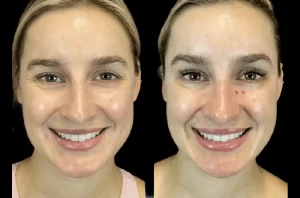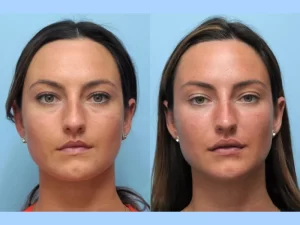Long days, sunshine, and an excuse to spend time outdoors are all the benefits of summer. Despite the season bringing freedom and enjoyment, it also poses health risks, especially due to extended sun exposure. Sunburn and heatstroke are two of the biggest risks during hot weather, and both can be avoided or at least decreased by wearing a hat .
“Donning a hat in the sun isn’t simply an aesthetic statement; it’s a health choice,” says Los Angeles dermatologist Dr. Emily Greene. “The areas of your body that are most exposed are your head and face, so protecting them is crucial to avoiding heat-related illnesses.”
The Science Behind Sun Exposure
Before diving into how hats and caps help, it’s important to understand what happens when the body is exposed to intense sunlight for long periods.
Sunburn takes place when your skin cells’ DNA is harmed by ultraviolet (UV) radiation. This raises the risk of skin cancer, including melanoma, as well as causing excruciating red spots and peeling. Up to 80% of skin cancers are related to UV radiation from the sun, according to the World Health Organization.
Heatstroke unconsciousness is a condition in which the body becomes overheated and loses its ability to control its temperature. If left untreated, it can be fatal and is more severe than heat exhaustion. Heatstroke is especially harmful to the brain, and its symptoms can include a sense of unconsciousness and even seizures.
How Hats and Caps Offer Protection
Hats and caps act as physical barriers that reduce the amount of sunlight directly hitting your head, face, and neck—some of the most sensitive areas of the body.
1. Blocking UV Rays
Your face, scalp, and neck are protected from damaging UV rays by the brim of a curved baseball cap or a wide-brimmed hat. UPF (Ultraviolet Protection Factor) fabrics, which are specifically made to block out almost 98% of UV radiation, are even used for creating some hats.
2. Reducing Body Temperature
The temperature of your body is mostly managed by your head. By reflecting sunlight away, a hat can help retain a layer of cool air near your scalp. This can postpone or avoid overheating, particularly when engaging in physically taxing outdoor activities like sports, hiking, or gardening.
3. Shielding the Scalp and Eyes
The scalp is often overlooked when applying sunscreen, and for people with thinning hair or bald spots, this makes it highly susceptible to burns. A hat covers the scalp entirely. Additionally, by shading the eyes, hats also reduce glare, helping you stay alert and less fatigued in bright conditions.
Types of Hats That Offer Summer Protection
Not all hats are created equal when it comes to sun protection. Here’s a comparison of common styles:
| Type of Hat/Cap | Coverage Area | Best For | Protection Level |
| Wide-Brimmed Hat | Face, neck, ears | Hiking, gardening, beach days | Excellent |
| Baseball Cap | Face, scalp | Casual wear, sports | Moderate |
| Bucket Hat | Head, ears | Urban settings, travel | Good |
| Legionnaire Cap | Head, neck | Running, cycling | High |
| Straw Hat (with tight weave) | Face, neck, scalp | Outdoor lounging | Varies (check weave) |
Real-Life Applications
Imagine that you are going to the beach for the day. The temperature is on the increase, there is little shade, and the sun is high. Although using sunscreen is a good place to start, it won’t completely protect the scalp and will come off with perspiration and water. A hat with a wide brim provides constant protection and decreases the risk of sunburn and excessive heat accumulation on the head.
Or perhaps you’re an athlete training outside or a construction worker. In addition to protecting the scalp and eyes from direct sunlight, a cooling cap made of moisture-wicking fabric can aid in sweat absorption and heat reflection.
Headgear becomes a first line of defense in both situations.
What Happens Without Protection
When you skip the hat on a hot day, you’re exposing your head directly to the sun. This can lead to:
Scalp sunburn (which is both painful and hard to treat)
Facial sunburn around the forehead, nose, and ears
Increased risk of heat exhaustion or heatstroke
Headaches and dehydration due to temperature regulation issues
The CDC (Centers for Disease Control and Prevention) recommends wearing a hat as part of its basic guidelines to avoid heat-related illnesses during extreme temperatures.
Hats as a Style and Health Statement
Hats have long been linked to personal style as well as health. There are many options that blend style and functionality, ranging from sporty snapbacks and sophisticated sun hats to beach hats and straw fedoras. This makes it simple to choose a look that both complements your appearance and safeguards your health.
In real life, a lot of apparel companies now use sun-safe technology in their designs, producing hats that are ideal for summertime excursions because they have cooling linings, breathable materials, and incorporated UV protection.
A Simple Habit That Makes a Big Difference
One of the easiest and best ways to protect yourself from the sun throughout the summer is to wear a hat or cap daily. Wearing headgear should be as natural as grabbing sunscreen, whether you’re working outside, taking a vacation, running errands, or walking the dog.
Dr. Greene once advised, “Wearing a hat in the sun isn’t just a fashion choice—it’s a health decision.” Keep this in mind.
Her remarks serve as a reminder that fashion and health can coexist. Additionally, a basic hat could be your most essential summertime accessory.
Final Thoughts
It is more important than ever to protect yourself from the sun as worldwide temperatures continue to rise and UV levels rise. A dependable, reasonably priced, and fashionable form of protection, hats and caps help ward off dangerous ailments like sunburn and heatstroke. The goal is to enjoy the outdoors in a safe manner, not to avoid it.
Thus, remember to bring your hat the next time you venture outdoors in the summer heat.
READ MORE….. style with me









